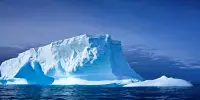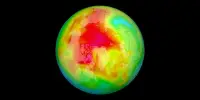The stability of three great ice caps in the world is one of the biggest questions in climate science. Any of these melts will displace millions of people living in millions of areas.
So scientists as bewildered as to be surprised to discover fossil vegetation under Greenland’s ice sheet, suggesting that the island has lost its ice cap in more recent times than previously suspected. The question of the final melting of most of Greenland’s ice was then in heated competition. Five years ago, Nature published two journals in the same edition, which came to almost opposite conclusions using different methods. Even though Greenland has held most of its ice for the past few million years, we cannot assume that it will happen through Anthropocene, but it will be an encouraging start.
However, a core sprinkled as part of the use of a Cold War 55 years ago suggests that we do not even have that comfort. The original was a gathering at Camp Century, a military base pretending to be a research center in northwestern Greenland, one of the closest ground locations at the North Pole with ice 1.4 kilometers (0.9 miles) thick.
Scientists have missed the main treasure of the original due to the lack of modern analysis techniques but fortunately, the cores kept, and their potential significance recognized when moving from one freezer to another. Dr. Andrew Christ of the University of Vermont tested the core when expecting to see nothing but sand and rock, although it is interesting enough for a geologist. Instead, he found leaves, stalks, and shoots that could only come from when the area had been snow-free long enough for vegetation.
The important questions then became when this ice-free time happened, what caused it and how it happened. Dr Christ said in a statement, “Ice sheets usually smash and destroy everything in their path.” “But what we discovered was the structural structure of the plants – perfectly preserved. Although they looked like fossils, they found that they died yesterday. What survived in Greenland is a time capsule that we can’t find anywhere else.”
Christ and co-authors in the proceedings of the National Academy of Sciences have concluded Camp Century, and most of Greenland was ice-free at least twice during the Pleistocene era. One of these periods was probably 129,000-116,000 years ago the last interstellar was 1.1 million years ago. There another group with the paper that independently reached the same conclusion using different methods. Dr. Sarah Crump of the University of Colorado found dwarf birch pollen in the sediments of Baffin Island, near Lake Canada. Dwarf birch is moving north in response to current warming, but Cramp’s work shows that they have reached far enough north during intercropping, in harmony with ice-free Greenland.
Replacing birch leaves is much darker than tundra, so their expansion dries out the light and warms the planet, which would otherwise reflected, overshadowing any carbon capture. We have not gone a few extra degrees to experience this century without a drastic cut in global temperature greenhouse emissions over the last million years. If Greenland could melt in such a situation, it would probably be possible very quickly again. Even without the combined loss of ice from Antarctica, which would raise the world sea level by meters meters (22 feet), which is enough to keep the most densely populated parts of the planet underwater.












